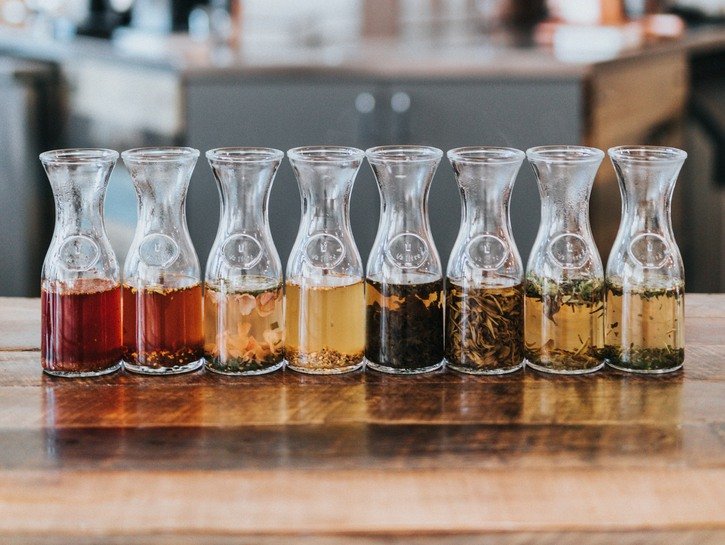
Not all drinks are created equal, and some are definitely stranger than others. Here are 6 weird drinks from around the world that might just slake your thirst. …Or have you doing a spit-take.
Videos by TravelAwaits
1. Kumis (Horse Milk Alcohol)
Horse milk (mare milk to be precise) is the basis of an alcoholic drink called kumis, beloved in countries like Mongolia, Kazakhstan, and Kyrgyzstan. The milk is not usually consumed in its pure form because it is a strong laxative. It is no wonder then that Central Asian people have been fermenting it and turning it into alcohol for millennia: the earliest recorded mention of kumis dates from the year 5 BC.
Kumis is not highly alcoholic, similar to beer in its strength and form of consumption. However, it is closer to wine in its production, since the fermentation happens from liquid sugars (fructose in wine, lactose in kumis) instead of grains. Of all the drinks on this list, it is by far the most reasonable.

2. Snake Wine
Snake wine is pretty much what it sounds like: rice wine that has a snake in it. This traditional drink has been consumed in China for millennia, and can still be found there, as well as in certain areas of India and Southeast Asia. It was once consumed as medicine, with the snake venom thought to have beneficial effects for the drinker. Don’t worry, though: the venom may not be restorative, but it’s neutralized by the alcohol and poses no threat.
Threat or no threat, many people would still be put off by the idea of drinking wine with a dead snake in it. If you are not one of those people, one of the best places to find snake wine is the legendary Huaxi street night market in Taipei, Taiwan.

Snake wine. Wikimedia Commons
3. Seagull Wine
If you think you’ve got the hang of this now, I am sorry to disappoint. Seagull wine is not simply a wine with a dead seagull in it, like its snake-based cousin. Seagull wine, which is made by the Inuit people of the far North, is the result of placing a dead seagull in water and leaving the whole thing to slowly ferment in the sun.
According to one traveler who tried the beverage before being told how it’s made, it “wasn’t bad.” That is probably the best praise that seagull wine will receive from anyone south of the Arctic circle.
4. The Sourtoe Cocktail
The Sourtoe Cocktail has been proudly served by the Sourtoe Cocktail Club in Dawson, Yukon Territory, since 1973, although we are not entirely sure why that is. It’s not so much a cocktail as it is an ingredient that can be added to any drink: a real, preserved human toe.
Multiple people have donated their toes to the bar, and it now has a small collection. There used to be a $500 fine for drinking the toe itself, which was increased to $2,500 when a man deliberately drank the toe in one shot in 2013.
There is only one rule: “You can drink it fast, you can drink it slow – but the lips have gotta touch the toe.” Some people just love a challenge.

The Sourtoe Cocktail. Cult of Weird
5. Pizza Beer
Pizza and beer have long been known to go together, especially at the end of a long week. One Illinois couple has taken this further by developing Pizza Beer, the “World’s First Culinary Beer.” They achieved this by including tomatoes, garlic, and herbs in their brewing process, achieving a taste that many people have confirmed is very similar to that of pizza.
Depending on who you ask, this is either an abomination against the good name of pizza or the greatest invention in the history of mankind. If you fall on the latter end of the spectrum, you can find Pizza Beer at a range of U.S. locations, or online.
6. Gau Jal (Cow Urine Soda)
Gau Jal is a soft drink made from cow urine. It is the brainchild of Rashtriya Swayamsevak Sangh, a prominent group of Hindu paramilitary nationalists, who want it to replace the American Coca-Cola as India’s go-to soda.
Because of the sacred nature of cows in Hindu culture, cow urine and dung have been used as traditional remedies for centuries. The makers of Gau Jal hope that their product will lead to a resurgence in the use of cow urine as a health drink. While the soda may be popular with the members of the organization, there is little evidence that the wider Indian public has taken to replacing its refreshing Cokes with refreshing cow urine.

Cow urine soda. Firstpost
7. Placenta 10000
Unlike some other weird entries on this list, which have long histories within their cultures, Placenta 10000 was created in Japan back in 2008. The logic behind it is that placenta supposedly has regenerative properties, which is why some new mothers have taken to eating the placenta after giving birth in recent years. The drink supposedly tastes like fresh peaches, which sounds delightful, but the name of the drink is not likely to let you forget what it is you are drinking.
You’ll be relieved to know that it is pig placenta they use, although that just begs the question: where are they getting all their pig placentas from? There is, believe it or not, no scientific evidence to support health benefits of drinking pig placenta.
Well, bottoms up. Here’s mud in your eye! (Or, more likely, something less appetizing.)
